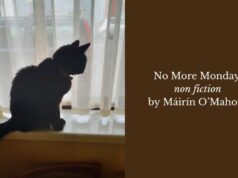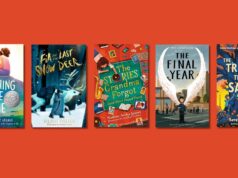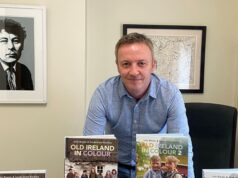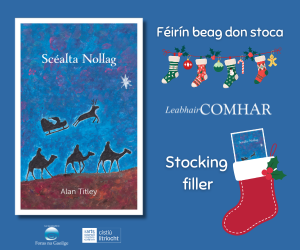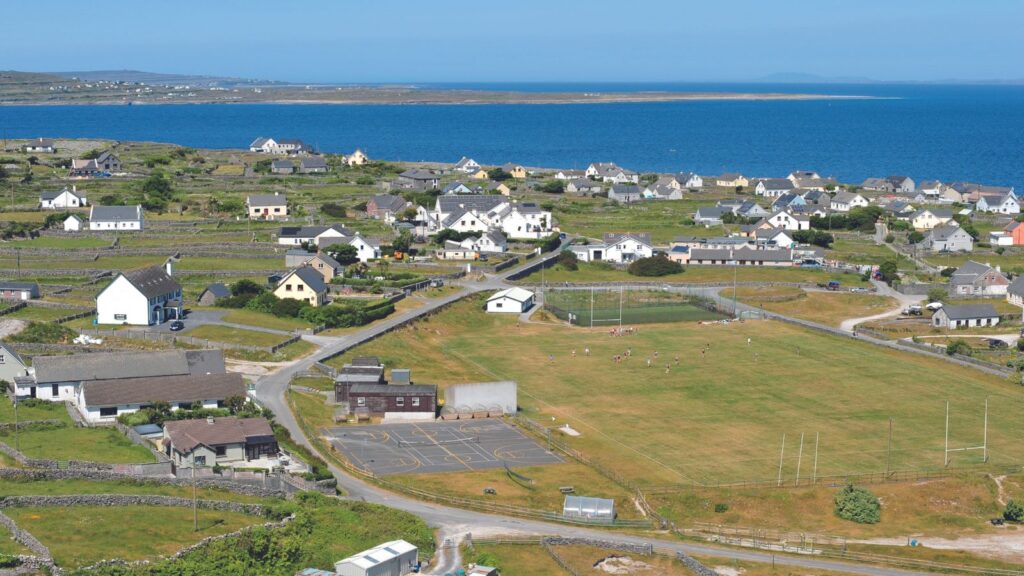
Inis Oírr, The Jewel of the Aran Islands|Michael O’Flanagan|Mercier Press
O’Flanagan shows the people, island life, and the cultural and artistic richness of Inis Oírr in photographs old and new
by John Kirkaldy
This book is very definitely not a coffee table book, despite its appearance. It is a wonderful depiction of a wonderful place, Inis Oírr (Inisheer), the smallest of the three Aran Islands. It deserves a place of pride in any ancestral dining room.
Michael O’Flanagan has assembled 256 pages, mainly of photos (colour and black and white) with a brief introduction, illustrating numerous aspects of island life. Most photos are contemporary but others go back several decades. It is clearly a labour of love, starting with his first visit in 1969.
O’Flanagan makes a convincing claim that the Inis Oírr is “the jewel of the Aran Islands.” (The other two islands and their fans might disagree.) There are many pictures of the coast, aerial views of places of interest and historic sites.

The book introduces a large range of people of all ages, stretching from President, Michael D. Higgins, to grandchildren in arms. There are pictures, amongst others, of fishermen, tourists, culture vultures, exhibitions, language schools, craft practitioners, musicians, sporting events, religious ceremonies, festivals and theatrical performances. A rare sight is two visiting members of An Garda Síochána ambling at a leisurely pace through the streets. I wonder if Andrea Stevenson from Essex, England realises that she is captured for posterity in a picture of her fishing in 2008 on the pier at An Churáit?
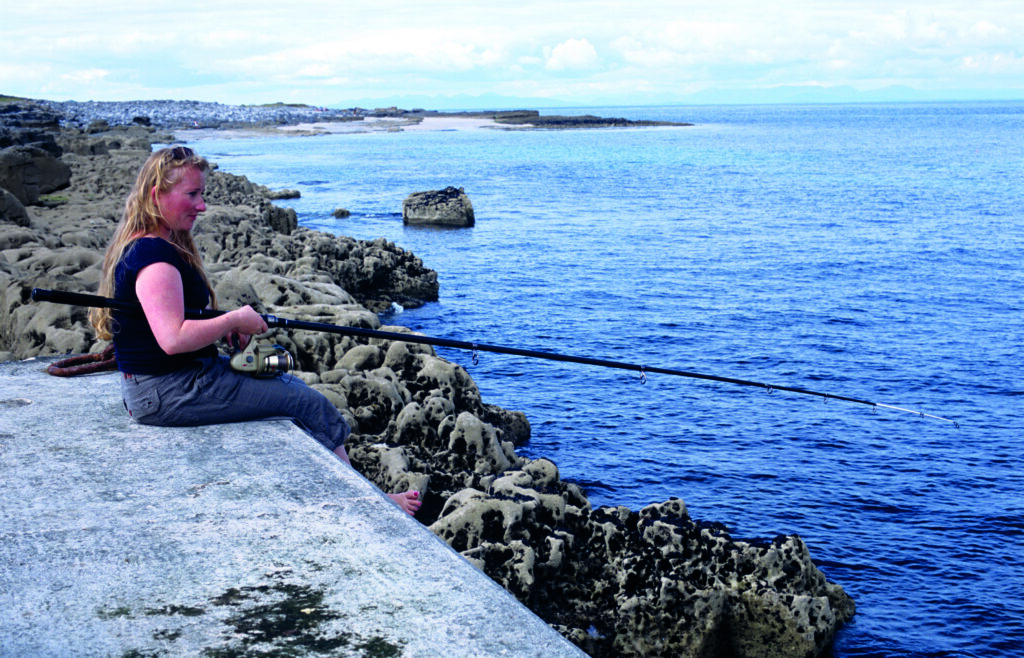
The book also illustrates how life has changed in recent times. In 1969, Inis Oírr had neither piped water, nor electricity. Water had to be drawn from one of the island’s wells. “There were no cars on the island and transport was via donkey, horse or foot.” It was not till 1997 that the island had electricity on a 24-hour basis. The roads are now tarred. Fishing and small-scale agriculture (the soil is poor and very sandy) are still important but tourism has become a major factor of life.
The book also illustrates how life has changed in recent times
This does raise some important economic, social and cultural issues. For example, water must be imported from the mainland at peak times of demand. Links with the outside world have improved with regular plane and ferry services. The island is proudly a member of the Gaeltacht. There have been improvements in Inis Oírr’s education, recreation and health facilities. In the old days, there were no secondary school children on the island during term time. It now has its own doctor and health centre.
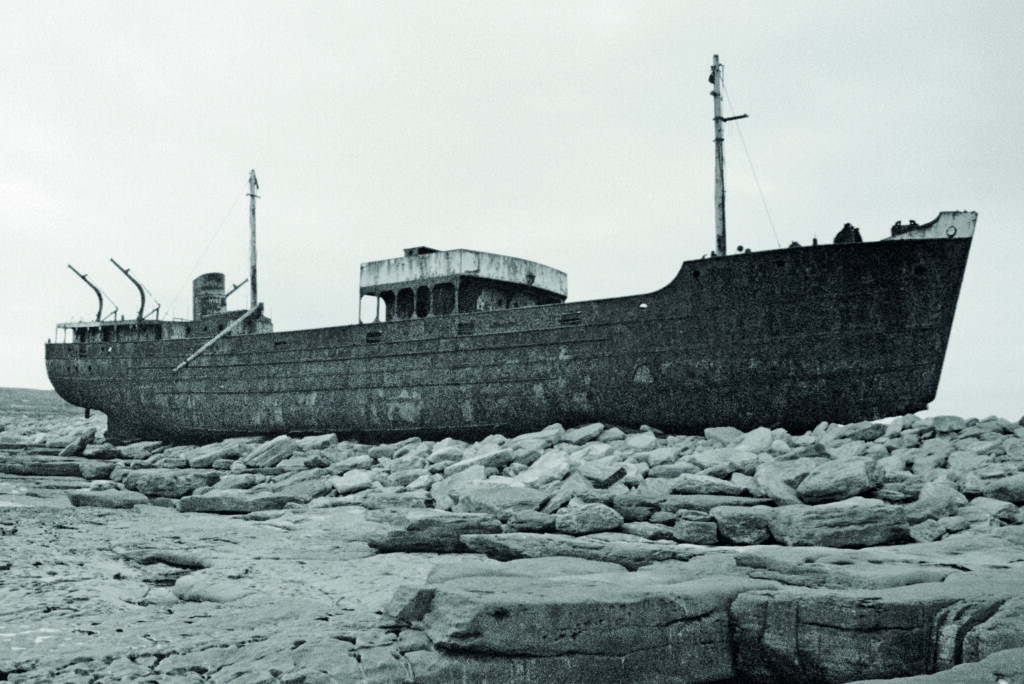
There are photos of some of the island’s rich history, stretching over many centuries. A must see is the remains of the Plassy, shipwrecked in 1960. There are striking illustrations of O’Brian’s Castle, the church and graveyard of St Kevin (the island’s patron saint), the church and graveyard of the seven daughters, a Bronze Age burial site and the tenth or eleventh century church of St Gobnait.
There are many examples of traditional crafts that are still very much in use
There are many examples of traditional crafts that are still very much in use. There is even an annual dry stone walling building festival (Féile na gCloch) and lots of examples of boundary markers from all over the island. Basket maker Tomás Taimín Ó Conghaile is caught in the middle of weaving. Father Seán and his son John Joe are shown with a donkey, laden with thatching reeds, on their way to a job. Craft ware and art are on sale in centres and shops. Three women proudly hold their makers’ certificates at a 2013 exhibition.

Master farrier Cecil Fitzgerald visits the island several times a year and is shown shoeing horses, while others wait. A 2006 picture sees Máiread Sharry working at her spinning wheel. Máírtín Taimín Ó Conghaile weaves a belt in a 2012 picture. The currach, a traditional sea going vessel, is still very much used for transport and fishing, not for forgetting, some race meetings.
It would be tempting to see this book as simply an upmarket brochure from Fáilte Ireland but it does not duck out of some real issues of island life. Inis Oírr is approximately 3km by 2km in size (about 600ha) and has a permanent population of about 290 people. Opportunities are limited, despite changes, especially for young people. Perhaps the most poignant picture in the book is one from August 2008 of a large crowd gathered for a Mass at Teampall Chaombáin during Dé Beatha Abhaile (welcome home), an event held when many islanders living away returned for a visit.
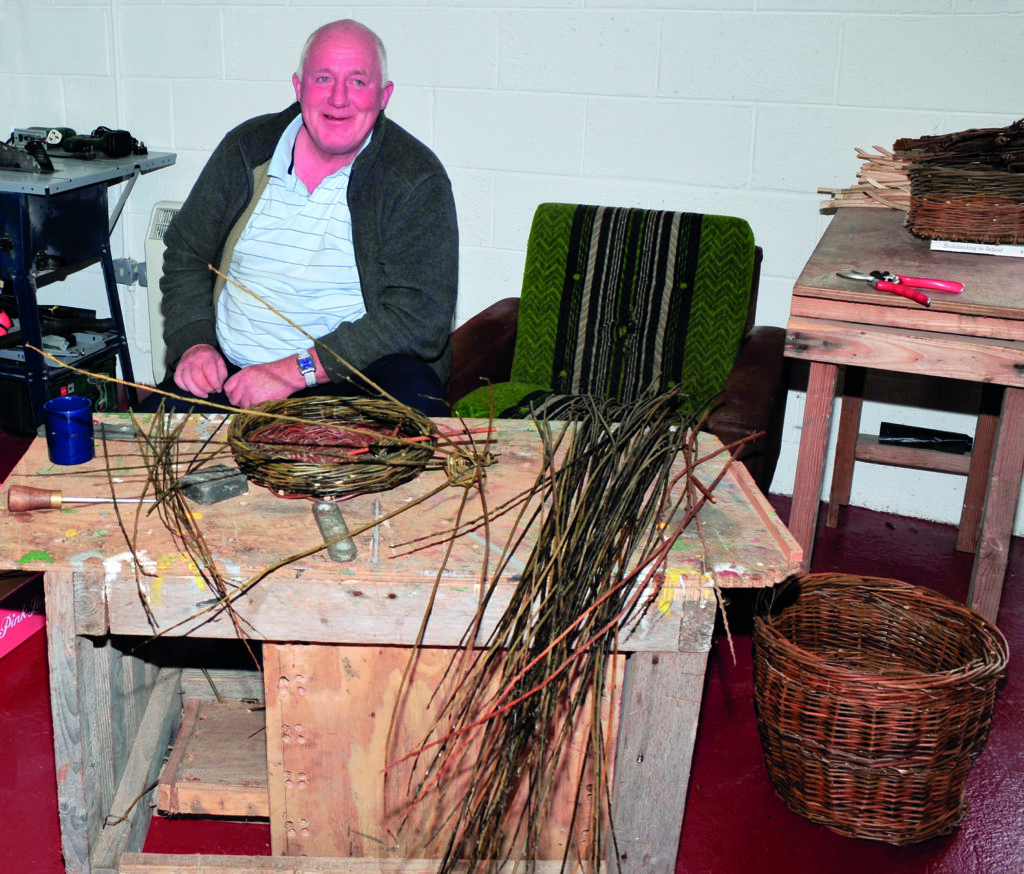
I must make a personal confession. I did not read this book with an open mind. I spent a week some years ago in Inis Oírr and, like O’Flanagan, fell in love with the place. Pictures of the pub, Tigh Ruairí, recall several nights of drinking Guinness and listening to music. I achieved a personal first on my return: the only time I have instigated an alteration in a scheduled flight.
A chapter of accidents, too complex to explain, meant that I got off by mistake at Innis Meáin (Inishmaan), the middle island, rather than the mainland and was in danger of missing my connecting flight. I pleaded with the official in the hut by the runway. He spoke in Irish to the pilot in mid-flight. He then looked at me with an impassive face but with a large wink. “The pilot says he has suddenly decided on a fuel check and will be coming back. In the meantime, you have just got about half an hour to visit the house, where the writer, J.M. Synge, used to live.”
In his introduction, O’Flanagan states: “I have aimed to give its readers a comprehensive view of Inis Oírr’s captivating and spectacular landscape from the air, sea and ground; to highlight the island’s historical sights, other attractions and locations throughout the island that will be of interest to visitors to Inis Oírr; to show the island’s infrastructural developments and how Inis Oírr has been transformed and modernised since I first visited in 1969 and to visually introduce the readers to some of Inis Oírr’s people, the island’s life and its cultural and artistic richness.”
He has been very successful.

John Kirkaldy has a PhD in Irish History, worked for many years with the Open University and has been reviewing for Books Ireland since 1980. He has contributed to three Irish history anthologies, a school textbook, and has been involved in a number of Open University History documentary series. Aged 70, five years ago, he went round the world on a much delayed gap year described in his book, I’ve Got a Metal Knee: a 70-Year Old’s Gap Year.










